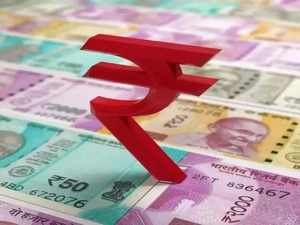The rupee fell for the third quarter in a row against the US dollar, while the benchmark 10-year bond yield rose for the fourth quarter as concerns about sustained inflation and continued foreign fund outflows weighed.
Interest rate hikes by the Reserve Bank of India to combat inflationary pressures, as well as persistently high global crude oil prices, weighed on bonds and the rupee.
After reaching a record low of 78.9825, the partially convertible rupee ended at 78.9675 per dollar. On Wednesday, it had reached 78.9650.
The rupee fell 4.2 percent in the June quarter, its biggest drop since the pandemic hit in the March quarter of 2020.
The rise in global crude oil prices following Russia’s invasion of Ukraine has increased global commodity prices and inflation.
Because India imports more than two-thirds of its oil needs, the country’s trade and fiscal deficits are expected to widen this year, weighing on the rupee.
“While RBI’s active use of FX Reserves has curbed volatility, depreciation pressures continue to persist on account of a multitude of global factors as well as few domestic ones,” analysts at QuantEco Research wrote in a note.
“We expect USDINR to touch 81 before the end of FY23,” they added.
With the US Federal Reserve expected to raise interest rates aggressively in order to contain inflation, interest rate differentials between the two countries are expected to widen, causing outflows from Indian markets.
The benchmark 10-year bond yield in India ended the day at 7.45 percent, down 1 basis point from the previous day. The 10-year yield increased by 61 basis points in the June quarter, the most since December 2017. The yield had increased by 79 basis points in the previous three quarters.
“Going forward, yields may continue to reflect the risk premia, with spillovers to the private sector through higher financing costs,” the Reserve Bank of India said in the Financial Stability Report released earlier in the day.
Source:NDTV








 Finance
Finance


